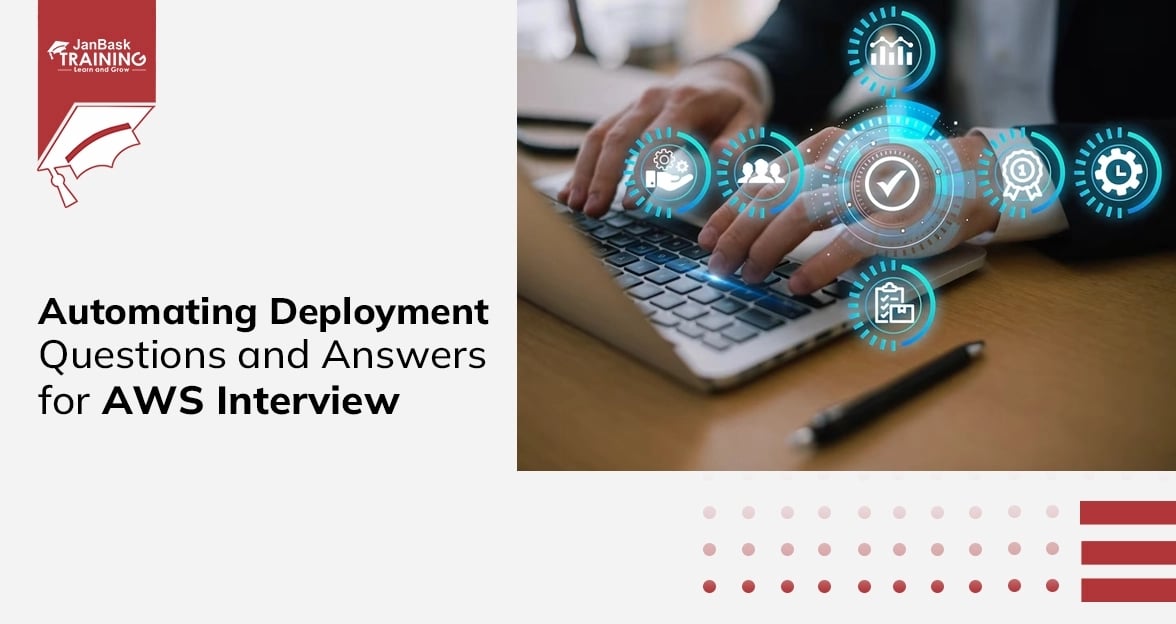 Grab Deal : Flat 30% off on live classes + 2 free self-paced courses! - SCHEDULE CALL
Grab Deal : Flat 30% off on live classes + 2 free self-paced courses! - SCHEDULE CALL

 Grab Deal : Flat 30% off on live classes + 2 free self-paced courses! - SCHEDULE CALL
Grab Deal : Flat 30% off on live classes + 2 free self-paced courses! - SCHEDULE CALL

ELB (Elastic Load Balancing) is an AWS service that automatically distributes incoming application traffic across multiple targets, enhancing fault tolerance and scalability. CloudWatch is a monitoring service offering real-time insights into AWS resources, enabling tracking, alarms, and log analysis to monitor performance and operational health effectively. Learn further details in our detailed guide.
Answer: Elastic Load Balancing allows the distribution of traffic across Amazon EC2 instances in multiple Availability Zones, ensuring high availability for applications. It supports routing and load balancing for HTTP, HTTPS, TCP, and SSL traffic to EC2 instances.
Offering a stable Canonical Name record (CNAME) for DNS configuration, it accommodates both Internet-facing and internal application-facing load balancers.
Elastic Load Balancing incorporates health checks for EC2 instances, preventing routing to unhealthy instances, and can automatically scale based on collected metrics.
Answer: Elastic Load Balancing offers several advantages:
Answer: An Internet-facing load balancer, as the name suggests, manages requests from clients over the Internet, distributing them to registered Amazon EC2 instances. When configured, it is assigned a public DNS name that clients use to send requests.
DNS servers resolve this name to the load balancer's public IP address, visible to client applications. As Elastic Load Balancing dynamically scales to meet traffic demand, it's not advisable to bind an application to an IP address that may no longer be part of the load balancer's resources.
Answer: Elastic Load Balancing does not support Server Name Indication (SNI) on load balancers. Consequently, if you intend to host multiple websites on a group of Amazon EC2 instances behind Elastic Load Balancing with a single SSL certificate, it is necessary to include a Subject Alternative Name (SAN) for each website in the certificate. This ensures that site users do not encounter warning messages when accessing the site.
Answer: Elastic Load Balancing supports protocols at two different OSI layers:
Answer: Cross-zone load balancing ensures equitable distribution of request traffic across all back-end instances, regardless of their location in different Availability Zones.
This configuration minimizes the necessity to maintain an identical number of back-end instances in each Availability Zone and enhances the application's resilience to the loss of one or more instances. While highly recommended for better fault tolerance, maintaining approximately equivalent numbers of instances in each Availability Zone is still advised.
Answer: Enabling connection draining ensures that a load balancer stops sending requests to instances undergoing deregistration or identified as unhealthy while maintaining existing open connections.
This allows the load balancer to fulfill ongoing requests made to these instances. When connection draining is enabled, a specified maximum time determines how long the load balancer keeps connections alive before reporting the instance as deregistered.
This timeout value, customizable between 1 and 3,600 seconds (default is 300 seconds), dictates when the load balancer forcibly closes connections to the deregistering instance once the time limit is reached.
Answer: When TCP or SSL is employed for both front-end and back-end connections, the load balancer forwards requests to back-end instances without altering the request headers.
However, enabling Proxy Protocol introduces a human-readable header to the request header, incorporating connection details like source IP address, destination IP address, and port numbers. This header is then transmitted to the back-end instance as an integral part of the request.
Answer: Amazon CloudWatch serves as a real-time monitoring service for AWS resources and applications. It enables users to collect and track metrics, set up alarms for notifications, and implement changes to monitored resources based on user-defined rules.
For instance, monitoring CPU utilization helps in deciding when to scale Amazon EC2 instances in an application tier. Additionally, CloudWatch supports the incorporation of custom metrics, allowing users to push application-specific metrics into CloudWatch through PUT requests, providing a valuable tool for managing capacity based on unique indicators.
Answer: Amazon CloudWatch Logs serves as a comprehensive solution for monitoring, storing, and accessing log files from sources such as Amazon EC2 instances and AWS CloudTrail. It enables retrieval of log data and real-time event monitoring.
For instance, you can track error rates in application logs and receive notifications if they exceed a defined threshold. CloudWatch Logs also allows storage of logs in Amazon S3 or Amazon Glacier, providing options for indefinite retention or adherence to an aging policy for systematic deletion of older logs when no longer needed.
Answer: Auto Scaling is a service designed to facilitate automatic scaling of Amazon EC2 capacity. It allows users to scale out or scale in according to criteria they define.
With Auto Scaling, the number of running Amazon EC2 instances can automatically increase during periods of demand spikes or peak demand, ensuring optimal application performance. Conversely, it can decrease during periods of demand lulls or troughs, effectively minimizing costs associated with unused capacity.
Answer: An Auto Scaling group is a managed collection of Amazon EC2 instances under the Auto Scaling service. It includes configuration options dictating when to launch new instances and terminate existing ones.
Essential attributes for an Auto Scaling group are a name, a specified minimum and maximum number of instances, and an optional desired capacity—indicating the preferred number of instances. If desired capacity isn't explicitly set, it defaults to the specified minimum number of instances.
Answer: Amazon CloudWatch alarms and scaling policies can be associated with an Auto Scaling group to dynamically adjust its configuration. When a threshold is crossed, CloudWatch alarms trigger changes (scaling in or out) to the number of Amazon EC2 instances behind a load balancer.
Once CloudWatch sends an alarm message to the Auto Scaling group, the associated policy is executed. This policy serves as a set of instructions, directing Auto Scaling to either scale out—launching new EC2 instances specified in the associated launch configuration—or scale in and terminate instances.
Answer: If a CLI command fails, start by checking the syntax. If syntax is correct, examine the limits associated with the command to ensure they haven't been exceeded. Some limits are set to reasonable defaults to prevent issues like race conditions or unintended high resource usage.
In case of issues, verify and potentially raise limits. AWS service limits can be found in the AWS General Reference Guide under AWS Service Limits for comprehensive information.
Answer: A launch configuration acts as the template utilized by Auto Scaling to generate new instances. It comprises the configuration name, Amazon Machine Image (AMI), Amazon EC2 instance type, security group, and instance key pair. Each Auto Scaling group is associated with a single launch configuration at any given time.
Answer: Key limits for Amazon CloudWatch include a cap of 5,000 alarms per AWS account, and metrics data is retained for a default duration of two weeks (as of the current information).
If longer retention is desired, transferring the logs to a persistent store like Amazon S3 or Amazon Glacier is necessary. It's crucial to be aware of these limits to plan and manage resource utilization effectively while ensuring that monitoring requirements align with CloudWatch capabilities. Detailed limits can be found in the Amazon CloudWatch Developer Guide.
AWS Solution Architect Training and Certification

As you conclude your journey through this AWS Interview Prep guide on Elastic Load Balancing and Amazon CloudWatch, remember that preparation is the cornerstone of success. Consider exploring specialized courses like AWS training classes to deepen your AWS knowledge further available at JanBask Training and equip yourself with the tools needed to navigate AWS interviews confidently. Best of luck on your interview journey!

DynamoDB Questions and Answers for AWS Interview

AWS SysOps Interview Questions & Answers

Cracking the Code: AWS Identity and Security Interview Q&A

Cyber Security

QA

Salesforce

Business Analyst

MS SQL Server

Data Science

DevOps

Hadoop

Python

Artificial Intelligence

Machine Learning

Tableau
Download Syllabus
Get Complete Course Syllabus
Enroll For Demo Class
It will take less than a minute
Tutorials
Interviews
You must be logged in to post a comment